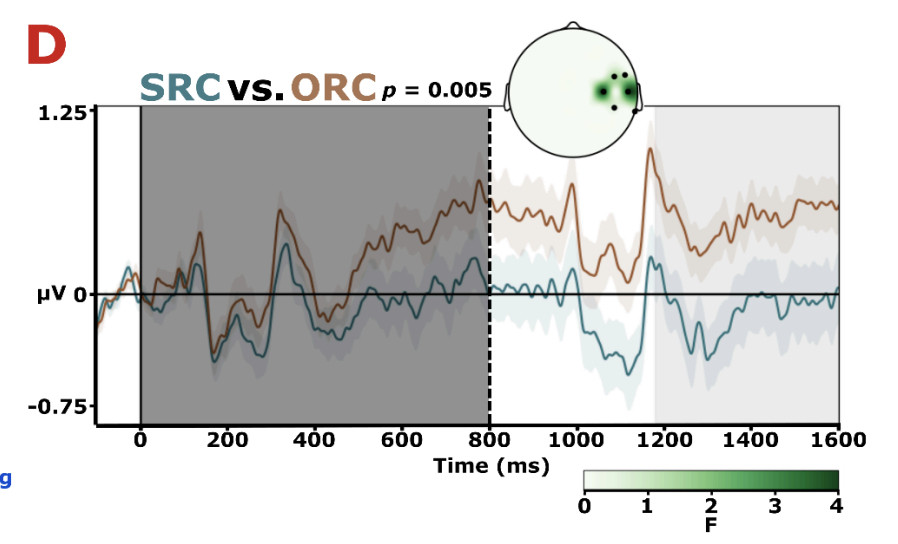
And, shout-out to my co-PI @liinapy.bsky.social and her group – this is part of a bigger project examining how phrases and sentences are processed when presented in parallel; what happens when separate out 'incrementality' from the 'words'? How does the brain respond to *SENTENCES*?
And, methodologically, we hope to show that we can start to probe more complex structures with the RPVP paradigm, albeit with some sacrifices and modifications that remove some of its elegance.
The RPVP paradigm, we claim, helps mitigate the demands on working memory necessitated by word-by-word processing. So, we think these findings suggest that there is still detectable contribution of the *structure* of the RC, hearkening back to earlier representational theories
We also find that Subject RCs and Object RCs show distinct EEG signals that diverge pretty early in the presentation of the first NP in the sentence – though we hesitate to make strong inferences about what this tells us about processing.

Well, ostensibly, we find a subject RC advantage, consistent with some findings and inconsistent with others. But, we also find a very strong interaction between RC type and whether it modifies the subject or object NP (replicating others).

We have a paper on wh-phrases in English & Chinese under review, but we wanted to see if we could apply this paradigm to the controversial subject- vs. object-relative clause advantage debate in Chinese. Is one 'harder', when both gap and filler are visible simultaneously?
We also have been toying with this rapid parallel visual presentation paradigm – instead of looking at neural responses to words given prior syntactic/semantic context, what do the EEG responses to (theoretically-interesting) *sentences* and *phrases* look like?
First up, this paper by UGA PhD student Donnie Dunagan and myself. Donnie has been working on the neural representation of long-distance dependencies, both filler-gap ('overt movement') and gap-filler types ('covert movement') in English and Chinese...

